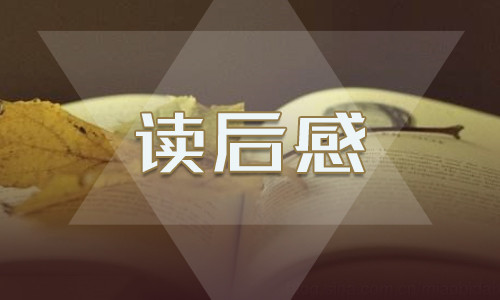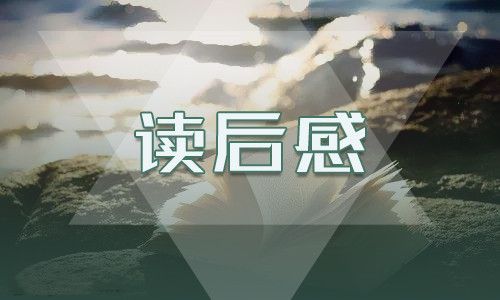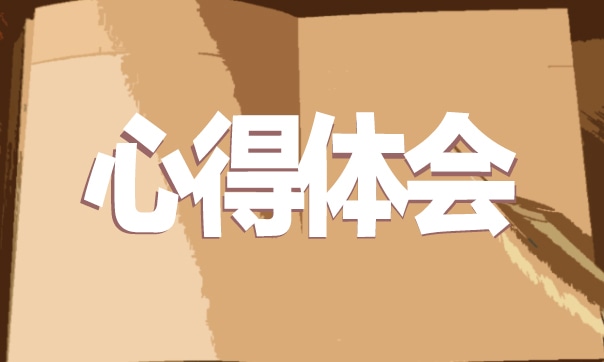2018考研英语(一)冲刺测试卷
试题
Section I Use of English
Directions: Read the following text. Choose the best word(s) for each numbered blank and mark A, B, C or D on ANSWER SHEET . (10 points)
If sustainable competitive advantage depends on work force skills, American firms have a problem. Human-resource management is not traditionally seen as __1__ to the competitive survival of the firm in the United States. Labor is simply another factor of production to be hired or __2__ at the lowest possible cost—much __3__one buys raw materials or The lack of importance ___4___ to human resource management can be seen in the corporation hierarchy. In an American firm the chief financial officer is almost always second __5___ command. The __6__ of head of human-resource management is usually a specialized job, off at the edge of the corporate hierarchy. The executive who ___7___ it is never consulted on major strategic decisions and has no chance to ___8___ to Chief Executive Officer(CEO). ___9___, in Japan the head of human-resource management is central—usually the second most important executive, after the CEO, in the firm's As a ___11___, problems ___12___ when new breakthrough technologies arrive. If American workers, for example, take much longer to learn ___13___ to operate new flexible manufacturing stations than workers on Germany (as they do), the effective cost of those stations is ___14___ in Germany than it is in the United States. More time is required before equipment is up and running at capacity, and the need for ___15___ retraining ___16___ costs and creates bottlenecks that ___17___ the speed with ___18___ new equipment can be employed. The result is a slower pace of technological ___19___. And in the end the skills of the bottom half of the population ___20___ the wages of the top half. If the bottom half can't effectively staff the processes that have to be operated, the management and professional jobs that go with these processes will 1. [A] necessary [B] dispensable [C] central [D] understandable 2. [A] rented [B]acquired [C] required [D] got 3. [A] like [B] that [C] as [D] while
4. [A] compared [B] attached [C] detached [D] entitled 5. [A] in [B] on [C] through [D] by 6. [A] responsibility [B] personality [C] importance [D] post 7. [A] supervises [B] holds [C] manages [D] brings 8. [A] pick up [B] start up [C] put up [D] move up 9. [A] Furthermore [B] Similarly [C] Although [D] However 10. [A] hierarchy [B] post [C] position [D] management 11. [A] matter [B] fact [C] result [D] case 12. [A] invent [B] emerge [C] perform [D] expose 13. [A] how [B] what [C] where [D] whom 14. [A] fewer [B] higher [C] littler [D] lower 15. [A] extensive [B] intensive [C] excessive [D] decisive 16. [A] produces [B] generates [C] manufactures [D] grows 17. [A] promote [B] limit [C] confine [D] accelerate 18. [A] which [B] that [C] where [D] whom 19. [A] innovation [B] recession [C] progression [D] adaptation 20. [A] raise [B] lift [C] affect [D] balance
SectionⅡ Reading Comprehension
Part A
Directions: Read the following four texts. Answer the questions below each text by choosing A, B, C or D. Mark your answers on ANSWER SHEET . (40 points) Text 1
A divided Supreme Court ruled Monday that police may take DNA samples when booking those arrested for serious crimes, narrowly upholding a Maryland law and opening the door to more widespread collection of DNA by law The court ruled 5 to 4 that government has a legitimate interest in collecting DNA from arrestees, just as it takes photographs and collects fingerprints. , the majority said it was justified to establish the identity of the person in custody. “DNA identification represents an important advance in the techniques used by law enforcement to serve legitimate police concerns for as long as there have been arrests,” Justice Anthony M. Kennedy The dissenters were three of the court’s liberals plus conservative Justice Antonin Scalia, who amplified his displeasure by reading a summary of his dissent.“The court has cast aside a bedrock rule of our Fourth Amendment law: that the government may not search its citizens for evidence of crime unless there is a reasonable cause to believe that such evidence will be found,” In his dissent, Scalia wrote that the majority’s attempts to justify the use of DNA as an identification tool “taxes the naivety of the naive.” He added, “Make no mistake about it: As an entirely predictable consequence of today’s decision, your DNA can be taken and entered into a national DNA database if you are ever arrested, rightly or wrongly, and for whatever reason.” Kennedy said Maryland’s law is more limited than that. He noted that DNA can be taken only from those suspected of “serious” crime, that the sample is destroyed if the arrestee is not convicted, and that the DNA tests did not violate the privacy of the person by revealing genetic traits or medical information. Besides that, Kennedy said, DNA identification contains critical
clues about whether an arrestee should be eligible for being released on bail or whether he would be likely to flee because he had committed a crime more serious than the one for which he was But Scalia said “Solving unsolved crimes is a noble objective, but it occupies a lower place in the American noble objectives than the protection of our people from suspicionless law-enforcement searches,” He concluded with a nod to the Framers of the Constitution: “I doubt that the proud men who wrote the charter of our liberties would have been so eager to open their mouths for royal inspection.” The decision was evidence of Earlier this term, Scalia joined Ginsburg, Sotomayor and Kagan to rule that bringing a police dog to a suspected drug dealer’s door without a warrant amounted to an unlawful search. And Scalia joined that held police officers generally must try to get a warrant before forcing uncooperative drunken-driving suspects to submit to a blood
21. The majority of Supreme Court Justices hold that the collection of DNA samples from A. overestimates the implications of techniques B. provides an effective identification tool C. serves the interest of the government D. constitutes an illegal police search
22. According to Paragraph 3, Justice Antonin Scalia’s dissent is largely out A. his strict adherence to the Fourth Amendment law B. his concern over misjudgment and wrong arrests
C. his defense of a citizen’s privacy in law enforcement D. his doubt about the reliability of DNA identification 23. To which of the following would Kennedy agree, according to Paragraph 4 A. Maryland’s law about DNA collection has obvious limitations and needs to be B. DNA samples should be taken from for both serious crimes and minor C. DNA samples collected from arrestees should be entered into a national DNA D. DNA identification provides critical information about the potential danger posed by an 24. By mentioning the Framers of the Constitution, Scalia intended to A. question the nobility of the judicial process of Maryland case B. demonstrate the historic significance of Maryland case C. denounce the court’s decision as against the protection of personal rights D. illustrate the embarrassing DNA sample collection procedure 25. Which of the following is suggested in the last paragraph A. The court’s attitude on Fourth Amendment cases is increasingly B. The justices usually split on decisions about the Fourth Amendment C. Scalia has an inconsistent attitude on the issue of law-enforcement D. The court sometimes goes against the Fourth Amendment
Text 2
Being the first to do something matters. Being the first to tell other folks that you did it matters too. For scientists, publication in a peer reviewed journal is the primary way of communicating experimental results, so getting a manuscript through the review process and into
publication in a timely manner is important. This can get complicated if you are also trying to be published in the most prestigious journal For example, a scientist could submit their manuscript to a prestigious journal like Nature or Science. The article is sent out for review and within a few months the authors get a note back saying that while their science was methodologically sound, it just wasn’t innovative enough for those journals. Next, the scientist submits it to the top journal in their field, only to be told in a few months that it was too interdisciplinary for that journal. A scientist may go through several rounds of submission and rejection looking for a suitable home for their manuscript, worrying as the months slip by that someone else has beat them to the publication of similar Enter the folks behind new “portable peer review” services. Traditionally, the review process was done within the organizational structure of the journal you submitted your manuscript to. These new services are independent of specific journals and their goal is to cut down on the redundant work being done in the publication process. This separates the review process from the publication process, and authors could take their reviews with them as they search for an appropriate publication While the details vary widely, it is similar to traditional journal based peer review. An author submits a manuscript, reviewers are located, and the reviewers provide commentary on the paper. The portable peer review services have generally taken the time to develop detailed rubrics and detailed guiding questions for reviewers. The authors can then revise their manuscripts and take everything to a journal of their choice. The portable peer review services are also working hard to cooperate with journal editors, allowing them to tell their authors that reviews from their service will be welcomed at specific journals. Some journals have instituted policies accepting outside peer review, starting to welcome manuscripts that have been rejected by higher impact Importantly, these services often mention the desire to develop a “reputation economy” for reviewers. While many reviewers take the time to provide polite, constructive criticism of a manuscript, there are others who may simply say “this sucks.” Knowing who is more likely to provide the former ahead of time could be useful. For example, Peerage of Science offers a “peer review of peer review” that rates reviewer reviews, and provides reviewer scores on reviewer Although scientists recognize that peer review has problems, most recognize that it serves a valued role in communicating scientific research. New portable peer review services hope to improve the quality of reviews while simultaneously reducing the amount of redundancy in the publication
26. In the first two paragraphs, the author A. the background information of journal editing B. the significance of submitting manuscripts timely C. the complicated route of getting published in prestigious journals D. the redundant procedure followed in the traditional publication system 27. The portable peer review services emerge to A. keep peer reviews independent and impartial B. avoid repetition of scientific studies C. speed up the publication process D. curb the excessive publication
28. According to Paragraph 4, the new services can help A. better their manuscripts before submitting to journals B. get a detailed revising guidelines from reviewers C. learn review results from journal editors in advance D. eliminate reviewers’ negative feelings toward once-rejected manuscripts 29. Paragraph 5 indicates that “reputation economy” is developed to A. guarantee the quality of manuscripts
B. earn reviewers academic credit and huge profits
C. make the reviews polite and easily accepted by authors D. improve reviewers’ conscientiousness in their reviews 30. What is the subject of the text
A. Peer review still has a role to play. B. Portable peer review is emerging.
C. The merits and problems of portable peer D. Online publication: solver to the redundant publication
Text 3
Thehasturnedintoa. We're constantly monitored, sometimes by corporations wanting to sell us stuff and sometimes by governments wanting to keep an eye on us. Momentary conversation is. Wholesalesurveillanceis It's about to get worse, though. Therefers toaworld where much more than our computers and cell phones isInternet-enabled. Soon there will beInternet-connected modules on our cars and home appliances.Internet-enabled medical devices will collect real-time health data about us.In its extreme,everythingcan be connected totheInternet.It's true thatthe\of Things\will make a lot of wonderful things possible, but it also givesthegovernments and corporations that follow our every move something they don't yet have: Inthenear term,thesheer volume of data will limitthesorts of conclusions that can be drawn.Theinvasiveness of “Internet Things” new technologies depends on askingtheright questions. For example, ifaprivate investigator is watching you inthephysical world, she or he might observe odd behavior and investigate further based on that. Such occasional observations are harder to achieve when you're filtering databases based on pre-programmed queries. In other words, it's easier to ask questions about what you purchased and where you were than to ask what you did with your purchases and why you went where you did. These analytical limitations also mean that companies like Google and Facebook will benefit more fromtheInternetof Things than individuals -- not only because they have access to more data, but also because they have more sophisticated query technology. Inthelonger term,theInternetof Things means ubiquitoussurveillance. If an object \you have purchased it, and communicates via either Wi-Fi orthemobile network, then whoever or whatever it is communicating with will know where you are. Your car will know who is in it, who is driving, and what traffic laws that driver is following or ignoring.Fast food restaurants will know what you usually order, and exactly how to entice you to order more. Willyouknow any of this It depends. Lots of these devices have, and will have, privacy settings. But these settings are remarkable not in how much privacy they afford, but in how much they deny.





